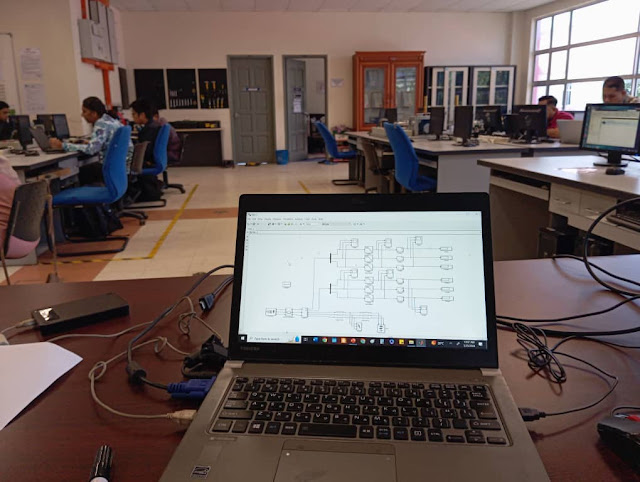I have conducted a workshop for postgraduate students and lecturers on how to use Matlab and Simulink software to model and simulate power systems. I hope the knowledge shared will be beneficial to everyone.
Working as senior lecturer and researcher at Faculty of Electrical Engineering & Technology, Universiti Malaysia Perlis (UniMAP). Research Interests: Power System Fault Location, Power System Simulation & Modelling, Fault Location in Power System, Internet of Things (IoT) and Renewable Energies.
INDUSTRIAL VISIT TO PERLIS POWER PLANT
On December 20, 2023, I and my students studying Power System Protection & Switchgear visited the Perlis Power Plant for an industrial tour. The aim was to give students hands-on exposure to a crucial element of the power system—the power plant. Initially, we received a comprehensive briefing on the power plant's operations, covering organizational structures, company management, operational systems, and power generation control. This particular plant employs a combined cycle system, relying on natural gas as its primary fuel source for generating electricity. Within this setup, there exist two main turbines: the primary turbine, fueled by burning natural gas, and the secondary turbine, activated by steam derived from the primary turbine's combustion heat. Following the briefing, participants had the opportunity to witness various parts of the power plant installation, including the turbine room, step-up transformers, grid connections, water storage facilities, and the power generation control room (SCADA).
Industrial Visit to HVDC Converter Station, Gurun, Kedah
HVDC Converter Station, Gurun, Kedah is a high-voltage direct current (HVDC) electrical power conversion station located in the Malaysian state of Kedah. It converts alternating current (AC) electricity generated by power plants into direct current (DC) electricity for long-distance transmission, and vice versa. HVDC technology is used to transmit large amounts of electrical power over long distances with minimal power loss.
This converter station is located in Gurun, Kedah and is connected to converter station at Khlong Ngae, Thailand through 300 kV DC transmission line. This HVDC grid connection increase the power system stability and security for the grid at North region of Peninsular Malaysia by connecting the grid of both countries.







.jpeg)





